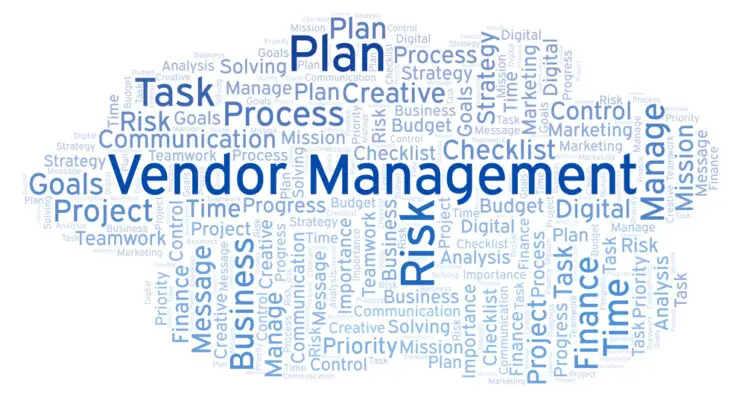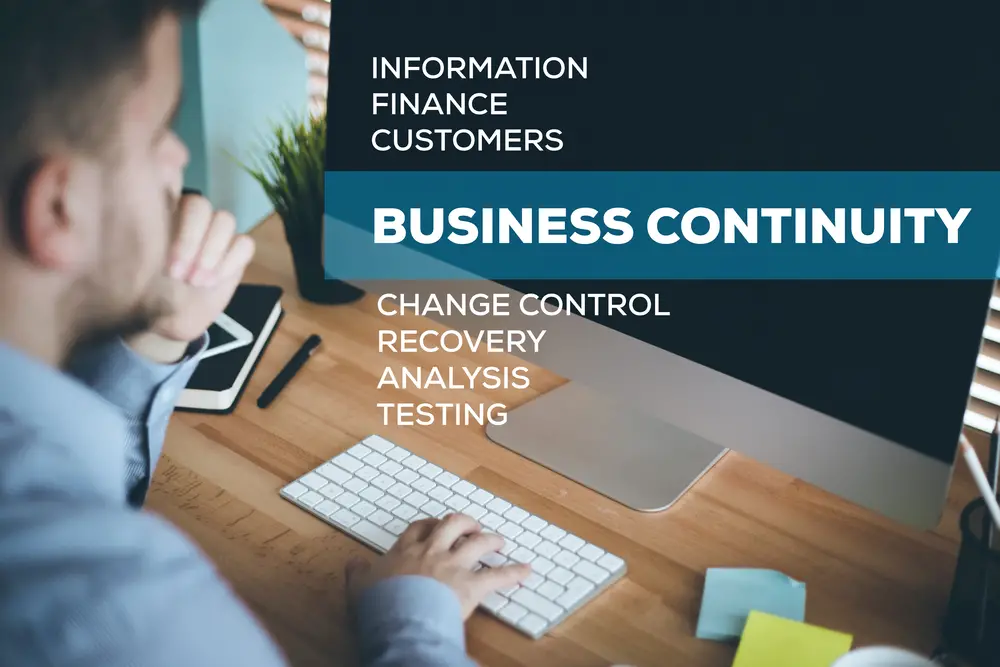Business continuity is “the capability of the organization to continue delivery of products or services at acceptable predefined levels following a disruptive incident” (ISO 22301:2012, British Standards Institution). In layman’s terms, the main purpose of business continuity is the ability of an organization to keep functioning during and after an emergency or major event.
Emergencies and major events can have a devastating effect on organizations of all sizes. According to the Federal Emergency Management Agency (FEMA), 40 per cent of small businesses never reopen following a disaster, and of those that do reopen, only 29 per cent are still in business after two years. The statistics for medium and large businesses are not much better – only 50 per cent of businesses survive past the first year following a disaster.
Business continuity 101 is all about understanding the importance of having a plan in place to protect and sustain your business operations in the event of an unexpected crisis. To define business continuity, simply means having a framework for responding to any incident that threatens to disrupt normal operations, whether it be from a natural disaster, cyber-attack, or other type of disruption. These is really what business continuity mean.
This involves designing an appropriate crisis management team, along with specific business continuity plans that are tailored to the needs of your particular organization. Business continuity plans provide the guidance and resources necessary to mitigate and manage risks during any type of disruptive event, as well as ensure that vital company operations are able to resume as quickly and safely as possible.
Business continuity planning helps an organisation maintain its critical functions during and after an emergency or major event. It is not just a matter of being able to survive an event physically but being able to quickly resume or continue operations with as little disruption as possible. A well-developed business continuity plan can mean the difference between a brief interruption in service and a prolonged shutdown.
Disruptions come in many forms, from extended power outages and earthquakes to fires, floods, cyber-attacks, and pandemics. They can be caused by natural disasters, human error, or malicious intent. No organization is immune – disruptions have hit even government agencies.
The U.S. Department of Homeland Security cites nine types of hazards that could cause a disruption: Cybersecurity incidents, Extreme weather events, Fire/explosion, Hazmat release/spillage, Infrastructure failure, Natural disasters, Pandemic/epidemics, Terrorism, and utility failure. Of course, this list is not exhaustive – other potential sources of disruption are specific to different types of organizations.
A business continuity plan details an organisation’s steps to remain operational during and after a disruptive incident. The plan should be tailored to the organisation’s needs and regularly reviewed and updated. It should address four key elements/areas:
1) Prevention and mitigation: what steps can be taken to prevent or reduce the impact of a disruptive incident? one of the main elements of business continuity.
2) Preparedness: what do we need to do to prepare for a disruptive incident?
3) Response: how will we respond to a disruptive incident?
4) Recovery: how will we get back up and running after a disruptive incident?
Once you have answered these questions, you will have the framework for your business continuity plan. The next step is fleshing out the details and ensuring everyone in your organization knows what to do during a disruption. FEMA has created templates that can help you get started. The following statistics show the importance of business continuity management.
According to data recovery statistics, 43% of companies that experience a major data loss go out of business within five years.
According to disaster recovery statistics, 60% of small businesses that experience a major data loss never reopen their doors.
According to Federal Emergency Management Agency, 40% of businesses affected by a natural disaster never reopen.
-70% of businesses affected by a major incident such as fire or flooding never reopen, according to continuity central.
-93% of companies that lose their data centre for 10 days or more due to a disaster file for bankruptcy within one year, according to unitrends.
If the business goes wrong, it can be costly. Loss of revenue and expenses means lower profit. In addition, it can’t compensate customers who deceive their competitors somehow. It’s important to maintain business continuity.
A successful IT business continuity strategy requires a four-step approach. Information technology combines networks, servers, desktop computers, laptops and wireless devices. It takes a good amount of software to work with productivity applications.
Business continuity – the ability of a company to provide critical function during disaster or recovery. Business continuity plans provide risk management strategies aimed at a rapid and efficient re-establishment of full functions for the organisation.
Business continuity requires basic functionality in an emergency situation and recovery in the best possible way. A business continuity program is designed based on the emergence and severity of unpredictable events, such as disasters and floods.
Business continuity planning aims to ensure that critical business functions can be resumed as quickly as possible, minimizing any financial or reputational damage. You’ll need to consider several factors when creating your business continuity plan, from identifying key functions and processes to establishing backup and recovery procedures.
This article will look at business continuity and some key considerations for implementing a successful plan.

What is Business Continuity? Definition
Business continuity is the planned and prepared action taken for a business operation in emergencies. A natural disaster can be a disaster for your organisation, causing an accident at work and affecting your company’s operations and business. It’s important that you know you must not only prepare a plan to end functions completely but for those that can affect your service.
What is Business Continuity Management?
Business Continuity Management, or BCM, refers to the processes and procedures a company implements to ensure that its operations can continue during and after a disruptive event. This includes identifying potential risks and developing strategies for minimizing their impact on the business.
BCM plans typically cover areas such as crisis communication, IT disaster recovery, supply chain management, and financial preparedness. By having a BCM plan in place, a company can minimize downtime and financial losses in the event of an unforeseen disruption. The business continuity plan e.g warehouse business continuity plan are products of BCM.
Additionally, having a formal BCM program helps to demonstrate to stakeholders that the company is committed to stability and resilience. The crisis management plan is part of business continuity planning. BCM is a key element of enterprise business continuity.
The BCM Process
The BCM Process is a cycle of steps used to manage business continuity and disaster preparedness. It involves planning, implementation, monitoring, reviewing, and continually improving upon the plans in place. The first step is risk assessment, where potential threats to the business are identified and analyzed on critical business processes.
Next, strategies for responding to those risks are developed and documented in a Business Continuity Plan. This plan serves as a guide for operations during a business disruption, including communication protocols and recovery timelines.
The implementation phase involves training staff on these plans and testing them regularly to ensure they stay up-to-date. Finally, the BCM process includes ongoing review to identify any gaps or weaknesses in the plans and make necessary changes as needed.
The BCM Process has three steps:
1. Identification of key business capabilities:
This involves analyzing the organization’s resources, goals, and processes to determine which functions are most essential for maintaining operations during a disruptive event. These key capabilities may include product or service delivery, communication methods, financial management, and critical information or technology access.
Once these capabilities have been identified, plans and strategies can be developed specifically to protect and maintain them in the event of a disruption. Identifying key capabilities provides a tangible starting point for creating a robust BCM process and allows the organization to prioritize their efforts in preparing for potential disruptions.
2. Measurement of the performance of these key capabilities
As a crucial component of any successful business continuity management (BCM) process, measuring key capabilities’ performance helps identify strengths and weaknesses in an organization’s resilience.
This measurement can take various forms, such as conducting a gap analysis or testing and exercises. Regardless of the methods used, regularly evaluating the effectiveness of key BCM capabilities ensures that resources are being allocated effectively and potential risks are being identified and addressed. Furthermore, this performance measurement provides valuable information for adjusting and improving BCM plans.
3. Management of these key capabilities to ensure that they continue to meet the needs of the business
Business continuity management (BCM) includes ensuring that key capabilities stay aligned with the needs of the business. This means regularly assessing and evaluating these capabilities, such as IT infrastructure, communication systems, and human resources, to ensure they meet current demands.
It also means planning for potential threats or disruptions to maintain business operations. To successfully manage these key capabilities, it is important to have clear goals and objectives and effective communication between departments.
Regular reviews and updates will help ensure the business’s continued success in facing challenges. Support of government associations like the national fire protection association is crucial in emergency processes.

The anatomy of a BCM program
A business continuity management (BCM) program comprises several key components. The first is a project initiation phase, during which goals and objectives are established, and a team is assembled. Next comes a business impact analysis of business processes by understanding the recovery time objective, where the organization assesses potential risks and determines the consequences of any disruptions.
Afterwards, there is a development phase where recovery strategies and plans are created, followed by implementation and testing of the plans. Finally, there should be regular reviews and updates to ensure that the program remains effective. While each BCM program will differ depending on the organisation’s specific needs, these components form the essential foundation for ensuring preparedness in an emergency.
It involves four key components: identification of potential threats, analysis of their impact on operations, development and implementation of necessary plans, and regular testing and review. The four dimensions can not be worked in parallel and efficiently implemented. But without implementing all of them, organizations can not prepare.
The BCM Team
Generally, a great BC program requires an integrated Business Continuity Management team. BCM officers manage all activities in the organization according to their policies.
Additionally, representatives of business units and IT are needed for input regarding implementing an appropriate recovery strategy for business and technological functions.
In functional terms, non-BCM employees are expected to handle recovery, and BCM staff provide advice and support business continuity. The BCM team carries out business continuity activities and develops a contingency plan for the organization.
They also ensure business continuity and improve the organization’s operational resilience. They activate business continuity plans for business recovery.
Start with something manageable.
It can appear daunting initially, but finding critical systems and applications and implementing basic recovery plans is a requirement of a functional BC plan. Your plans must include an organizational structure and the necessary guidance for your business division and management department. Even when you can’t implement the ideas in practice, a simple strategy will offer the structure necessary during emergencies.

Conclusion
Planning for disruptions may seem daunting, but it doesn’t have to be complicated or time-consuming. By taking some time upfront to develop a business continuity plan tailored to your organization’s needs, you can ensure that you will be able to weather any storm. And remember – FEMA’s resources are always available to help you through the process.
Developing a business continuity plan may seem daunting, but it’s essential to keep your business up and running in the event of a disaster. By taking four simple steps—identifying risks, determining Critical Business Functions, developing plans and procedures, and testing your plan—you can ensure that your business is prepared for anything. Don’t wait until it’s too late—start planning for business continuity today.

Chris Ekai is a Risk Management expert with over 10 years of experience in the field. He has a Master’s(MSc) degree in Risk Management from University of Portsmouth and is a CPA and Finance professional. He currently works as a Content Manager at Risk Publishing, writing about Enterprise Risk Management, Business Continuity Management and Project Management.

